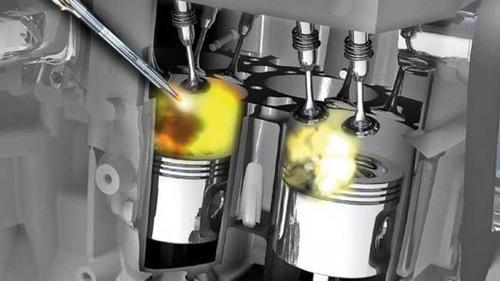Cold Flow Analysis for Diesel Engine Optimization
December 23, 2014

The internal combustion (IC) engine's excessive global utilization has always made it a subject of engineering research. While IC engines involve complex fluid flow interaction during the combustion process, an engine designer looks to optimize the chamber for highest performance. Doing so requires a large degree of design experience as well as practical and simulation experiments to devise an engine that’s efficient in terms of performance and fuel consumption. Computational fluid dynamics (CFD) is a very useful and intuitive tool in engine design, providing insights that cannot be obtained even with numerous experimental trials.

Combustion in diesel engines is far more complex than in spark-ignited engines, as the process of combustion involves the mixing of air and fuel having different phases. The ignition process is initiated when air surrounding the fuel molecules becomes hot and reaches the self-ignition temperature of the fuel. Thus the chemical reaction is more closely related to the ability of the air and fuel to mix properly. For efficient combustion, diesel engines are studied for air flow characteristics, and the subsequent mixing of fuel through the nozzle. An attempt is made to improve the swirl characteristics of the chamber to improve air-fuel mixing.
Related articles on DesignNews.com
Cold flow analysis using CFD is an ideal approach to study the flow characteristics without going into the details of chemical reactions occurring during the combustion. Cold flow analysis helps to identify the mixing characteristics during the intake stroke and the generation of turbulence due to the chamber geometry. These insights assist in ensuring that the air fuel mixture is in the right condition at the end of the compression stroke to facilitate flame propagation and complete combustion. Since the combustion process in diesel engines occurs at different points in the combustion chamber, a well-mixed and highly turbulent air flow is critical to ensure an optimum air/fuel ratio during the combustion process.
Cold flow simulation requires specifying additional information about the motion of valves and piston to the boundary conditions along with turbulence models and other parameters. Since the piston and valves will be moving, the mesh has to change accordingly, making the CFD problem transient. The geometric motion in this case is dependent on a single function – the crank angle. Since the geometry consists of moving and stationary geometries, its preprocessing is time-consuming. Ideally, to reduce the complexity, the moving and stationary parts should be meshed separately.
To predict the air flow from the intake ports, a port flow analysis should also be considered. The analysis provides insights on flow volume and swirl characteristics. Port design can be optimized by studying flow volumes causing separation, choking, and secondary motions.
With these analyses, engine design parameters can be thoroughly studied and optimized wherever required, before actually carrying out experimental test trials. The flow behavior in the combustion chamber, prior to the burning process, which is quite difficult to visualize experimentally, is made possible through the use of CFD techniques. Prior to full-cycle simulations, cold flow analysis is ideally the best tool to study the geometrical factors affecting the combustion performance.
Design engineers and professionals, the West Coast's most important design, innovation, and manufacturing event, Pacific Design & Manufacturing, is taking place in Anaheim, Feb. 10-12, 2015. A Design News event, Pacific Design & Manufacturing is your chance to meet qualified suppliers, get hands-on access to the latest technologies, be informed from a world-class conference program, and expand your network. (You might even meet a Design News editor.) Learn more about Pacific Design & Manufacturing here.
About the Author(s)
You May Also Like



